“Blitz” Costume Designer Jacqueline Durran Threads Through a Traumatic History in Steve McQueen’s WWII Epic
Costume designer Jacqueline Durran first dressed Saoirse Ronan in director Joe Wright’s sweeping English drama Atonement in 2007. She did so again for Wright’s action thriller Hanna and Greta Gerwig’s heartwarming period adaptation of Little Women, winning an Oscar for Gerwig’s adaptation of Louisa May Aclott’s beloved book. Durran collabs with the dazzling Irish performer for a fourth time in Steve McQueen’s wartime epic Blitz which follows Ronan as a widowed mother (Rita) trying to protect her only son George (magnificently played by eleven-year-old Elliott Heffernan) from the looming atrocities by sending him on a train far away. But George is determined to find his way back home. What transpires is a journey through the eyes of a child and a distraught mother trying to reunite during the perils of war.
“It’s unbelievable how quick it goes,” the costume designer says when reminded that it’s been 18 years since Atonement. Durran’s focus for Blitz was researching World War II London during a time when Nazi Germany systematically bombed the city over eight months between September 1940 and May 1941. Period photos grounded Durran’s decision-making where she stitched a realistic tapestry of silhouettes and colors of those fighting for their lives in a crumbling city. “London was this kind of metropolis full of people having a life-changing experience, but it was so important to capture them as characters,” she tells The Credits. “We wanted to create the idea of individuality with the costumes.” What it meant was developing looks that reflected the time period but also the personality of the characters.
Below, Durran discusses her second collaboration with McQueen following the series Small Axe, how character influenced costume design in this intimate portrait of survivors of the Nazi assault on London.
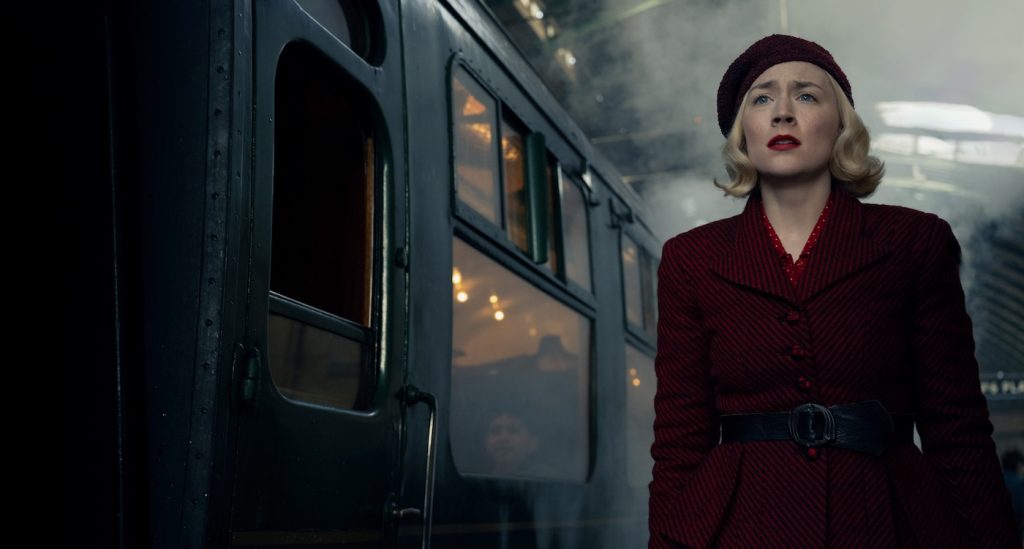
You mentioned you wanted to avoid the clichés of the time period. How did that affect the costume design and how you approached it?
What I tried to do was to go back to the original photographic sources. And one of the things we got our hands on was the pictures from the Imperial War Museum that had been censored. We took all the pictures that had people in, and we put them on our walls, and then we bored down into them to really see what people were wearing and the differences between the people and the characters in people. I wanted to ground it as much as I could in the references from the period instead of just doing a kind of 1940s sweep, which you can do pretty easily. I wanted to actually try and get character into it.
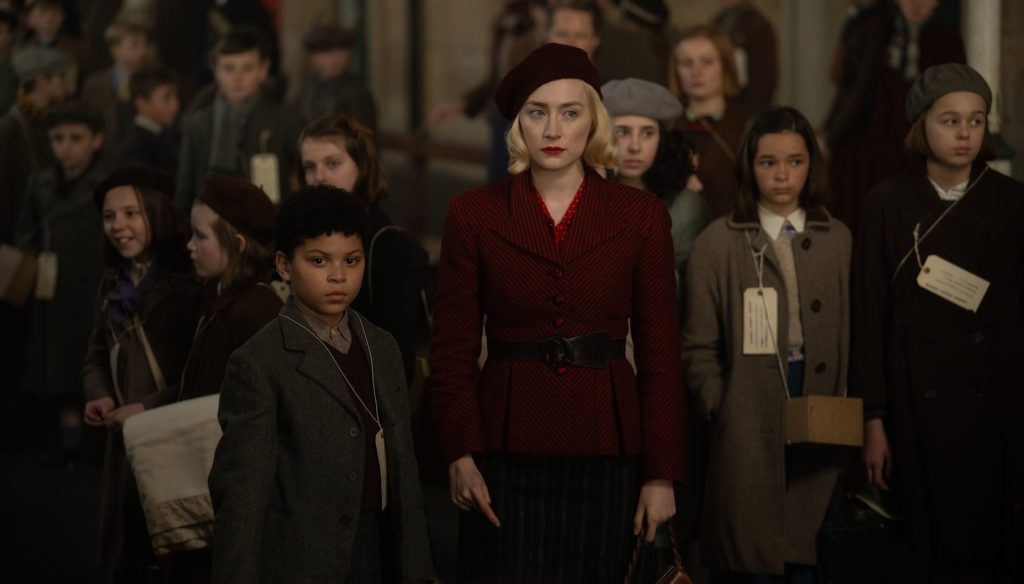
You can see the individuality come through the costume design. It’s almost as if each person in this film is telling their own story.
One of the key things about the movie is that it’s about London, and it’s about hundreds of thousands of people. And you really wanted to feel that it was hundreds of thousands of different people who all had their own story. And at any given time, you could have gone down and examined their story instead of Rita’s story. And it would have been a different story but equally valid.
McQueen has said the inspiration for Blitz stems from an image he saw of a small black boy standing on a rail platform with a suitcase. Did he show you the photograph?
Yeah, he did. We had that picture on our wall.
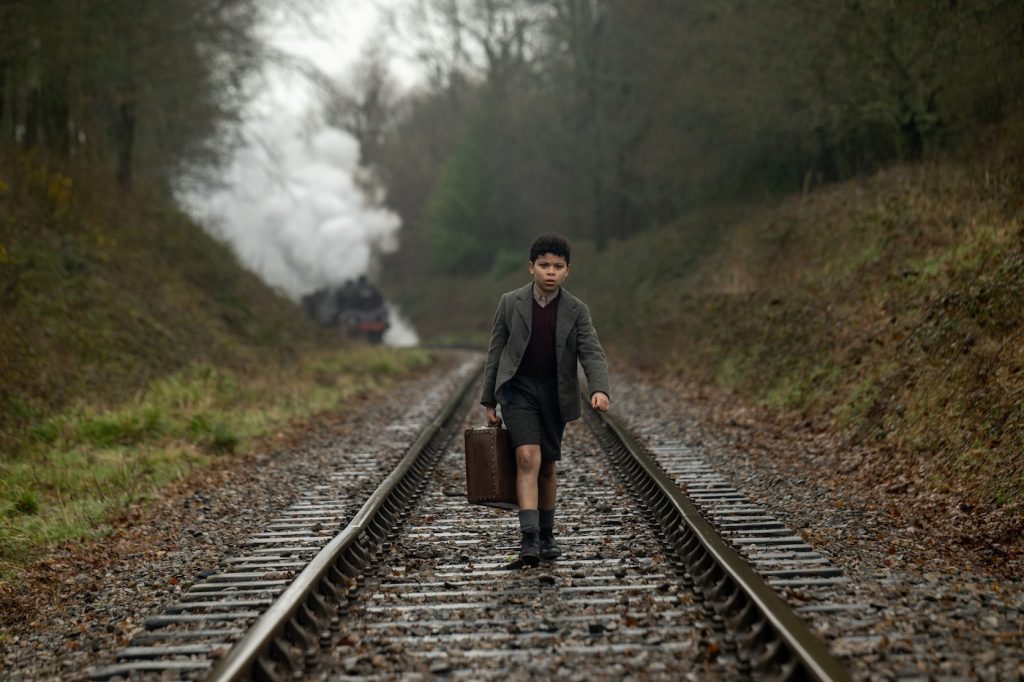
Did the image become an inspiration for George’s look?
In a way, it did. With that picture and with all of the children in the film, we could look at the pictures closely and take the details from what they were wearing, which wasn’t a massive range of clothing in England at that time. The children in those photos would be in shorts of different lengths and different degrees of raggedness that would either be too big or too small. It’s all about just being really observant about the details.
How did you approach grounding George’s grandfather Gerald’s (Paul Weller) costumes?
Gerald’s back story was that he had been an educated working-class man in the docks. He’d worked in physical labor, but there was a big tradition of working-class education in the UK during that period. He was part of that, so they were kind of the educated working class. That fed into what he was wearing, but now that he’s retired, he keeps things clean.
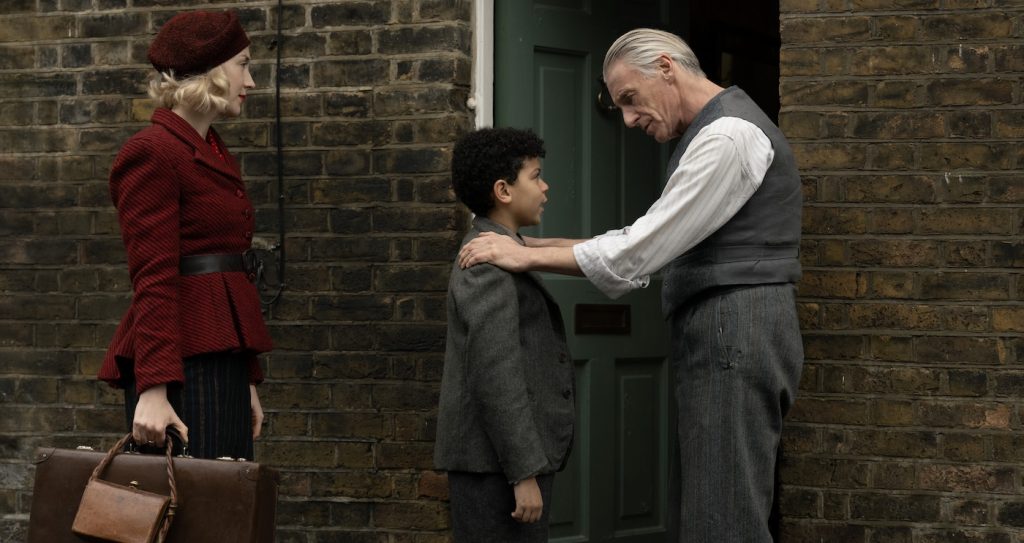
Did that working-class vibe fall into Rita’s look?
There are all these things that you can deduce about a character from a starting point that you can thread through. The thing about Rita was that there was a lot of reference for women that were putting their kind of best face forward. They felt it was part of the war effort to keep their appearance together. And I think that was part of Rita’s character, and Rita’s friends were all part of that, really.
You can see that during the factory scene when Rita speaks to a crowd of women.
Yes. When we get to the factory and you see all of the women, they’re in their context, they’re there, but there’s another 200 of them that are the same. Everybody’s got their story, everybody’s got their character and their individuality. That was what we were aiming for, and I thought it really ended up looking like the reference pictures; it was just great.
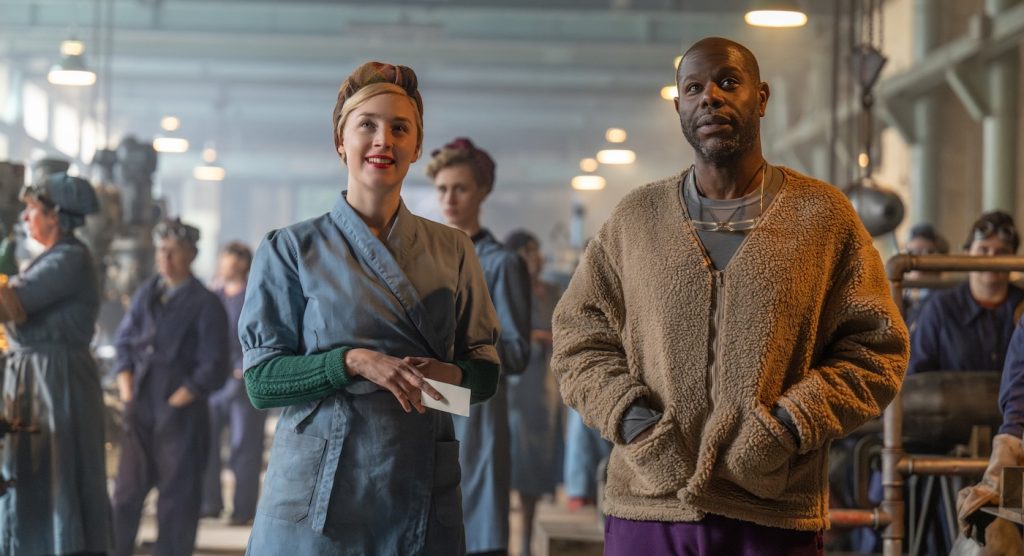
The color red is part of Rita’s character, especially her jackets. How did that play into your thought process?
I felt like it was part of the story of the smartness that people were aiming for during the war. And when we looked at original jackets, and we pulled a whole load of things to try for the first fitting, it was remarkable how stylish and well-cut these jackets were and the quality of them. I mean, there are so many that still exist. It’s amazing, however, that many years later, they’re still there. You can still try them on. They’re really well made. They’re beautiful pieces of clothing, and they were made during the war or immediately before. I wanted to capture the fact that a good jacket was widely available. Red is a color that repeats through the 1940s, and it just felt like the kind of color that was going to work for her character and also for her in the story.
One of my favorite shots is Rita sitting on the bus, which is red with her red jacket looking out. I think it’s such a beautiful shot, and it’s such a beautiful London scene that I just loved it. So I think it was more of a feeling of an atmosphere and a period and of London and other things for me.

George meets a soldier named Ife (Benjamin Clémentine) who tries to help him return home. How did you want to approach his uniform in terms of period accuracy?
All the uniforms are pretty accurate. The color of them was going to be that navy blue. For Ife, we made some samples in different weights of cotton because it’s all about what you would have under and how it will hang. So we did that to get a great shape in the uniform. Putting the piece of knitwear under it was always about finding a way of making that uniform human. It’s someone’s choice. It’s what someone’s wearing. So we knitted the sweater for him that went underneath. It’s gray and not showy in any way, but it’s about being warm and being utility and being your work clothes.
Blitz is in theaters now and streams on Apple TV+ on November 22.
For more stories on Apple TV+ series and films, check these out:
“Severance” Season 2 Trailer Unveils New Employees and Deepening Mysteries
“Silo” Season 2 Trailer Reveals Rebecca Ferguson’s Survival
Featured image: Saoirse Ronan and Elliott Heffernan in “Blitz,” now in theaters and premiering globally on Apple TV+ on November 22. Courtesy Apple TV+



